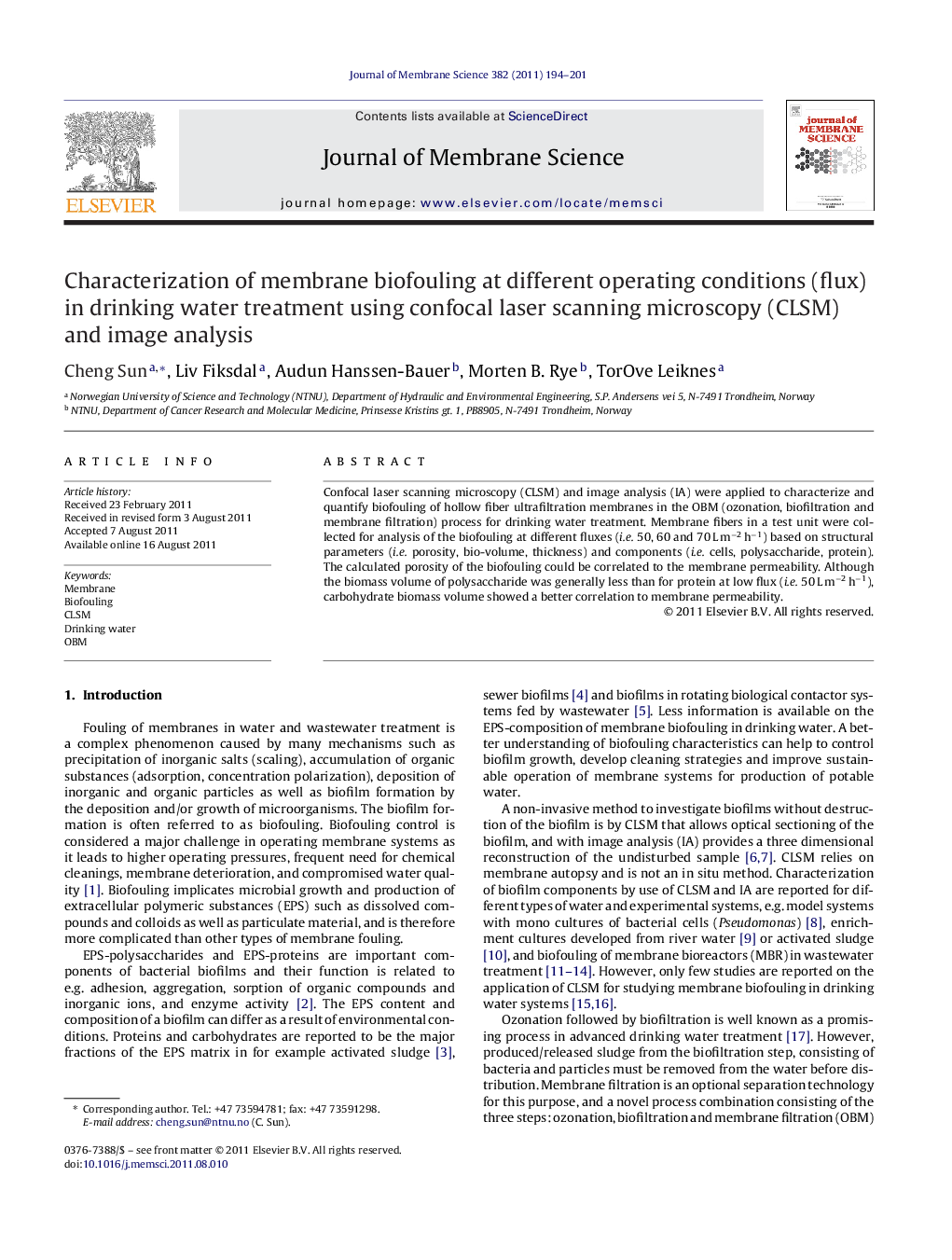| Article ID | Journal | Published Year | Pages | File Type |
|---|---|---|---|---|
| 635657 | Journal of Membrane Science | 2011 | 8 Pages |
Confocal laser scanning microscopy (CLSM) and image analysis (IA) were applied to characterize and quantify biofouling of hollow fiber ultrafiltration membranes in the OBM (ozonation, biofiltration and membrane filtration) process for drinking water treatment. Membrane fibers in a test unit were collected for analysis of the biofouling at different fluxes (i.e. 50, 60 and 70 L m−2 h−1) based on structural parameters (i.e. porosity, bio-volume, thickness) and components (i.e. cells, polysaccharide, protein). The calculated porosity of the biofouling could be correlated to the membrane permeability. Although the biomass volume of polysaccharide was generally less than for protein at low flux (i.e. 50 L m−2 h−1), carbohydrate biomass volume showed a better correlation to membrane permeability.
► Membrane biofouling in drinking water were analyzed by confocal microscopy (CLSM). ► Biofilm structural parameters and biofouling components were investigated. ► The porosity of the biofouling could be correlated to the membrane permeability. ► Protein appeared to be a dominating component of biofouling at lower flux. ► Carbohydrate in the biofouling had a more important effect on permeability.
